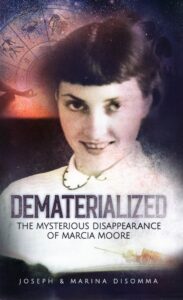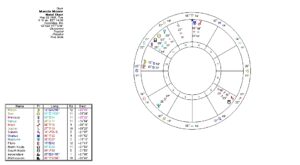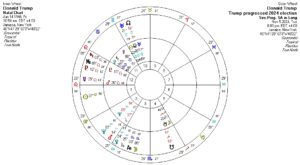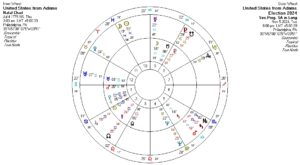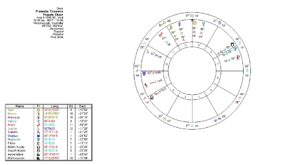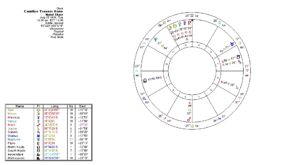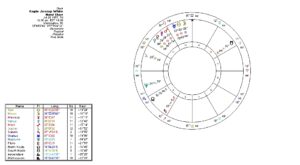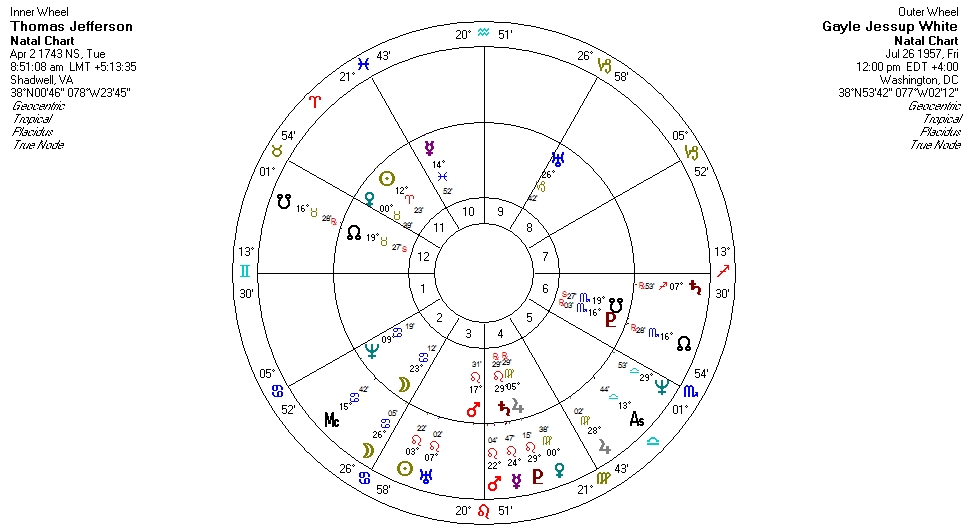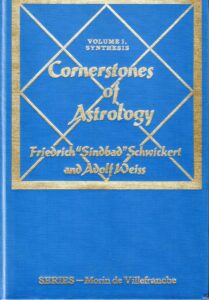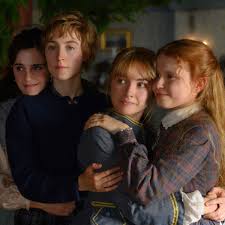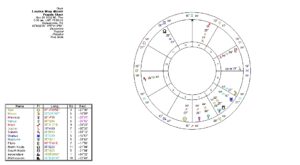 I was sad to hear of Angela Lansbury’s passing yesterday at the age of 96. I had written to her in 1990 and she provided her birth data – true Libra responsiveness (and she had beautiful handwriting, too). Below is the astro-bio I wrote about her and her chart at the time. It’s a little dated, but I collected a number of her quotes that reflected the chart nicely. I see so few in-depth chart interpretations these days – I miss them!
I was sad to hear of Angela Lansbury’s passing yesterday at the age of 96. I had written to her in 1990 and she provided her birth data – true Libra responsiveness (and she had beautiful handwriting, too). Below is the astro-bio I wrote about her and her chart at the time. It’s a little dated, but I collected a number of her quotes that reflected the chart nicely. I see so few in-depth chart interpretations these days – I miss them!
We may know her best as Jessica Fletcher, the teacher tuned mystery writer of TV’s “Murder, She Wrote.” She’s reached millions of viewers every Sunday night for the past six years on CBS. She’s Angela Lansbury, and she’ll turn 65 on October 16. Much of her earlier work in films and on stage is not as well known across the country as her television work. Lansbury has, however, had an amazingly successful and versatile career, and also a most unusual one. In nearly half a century in show business, she has been nominated for three Oscars and has won four Tony Awards. With Leo rising, Lansbury is a natural actress, with the ability to express herself with strength, ardor, and dynamism.
She also has Neptune in the first house, giving her portrayals emotional depth and sensitivity. Neptune sextiles the Sun and Mercury in Libra in the third house, gracing the actress with a talent for mimicry, strong imagination, exquisite taste, and the need to express herself. It’s a flowing aspect, and has helped the actress through difficult times. As she’s said, “The only thing I’ve ever had confidence in is my ability to perform. That is the one area…. where I have never had any doubt that I could deliver the goods. That has been the grace note in my sonata of life, the thing that has absolutely seen me through thick and thin, and even saved my sanity on a number of occasions.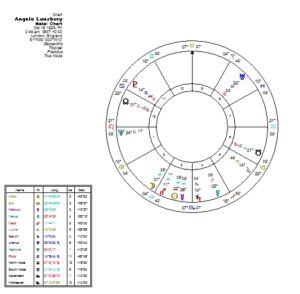
Neptune sextile Angela’s Sun and Mercury also gives her the ability to project what her imagination wants her to be. It has become part of her acting technique: “If you visualize yourself as graceful or beautiful or dynamic, it will affect how others see you.” The Sun-Neptune connection also contributes to her most obvious physical asset: her enormous clear blue eyes.
Angela has four planets in Libra in the third house: the Moon (actually in the second but near the cusp of the third house), Mars, the Sun and Mercury. Her need for communication is expressed emotionally (Moon) in action (Mars) and speech (Mercury) and serves as the basis for her career (Sun). The third house also imparts great versatility and talent in motor skills and speech. She’s said about her stage roles, “With each audience I feel I am communicating, telling them something I want them to know.”
Libra’s influence gives taste, delicacy, decorum, and the knack for instinctively
feeling the appropriateness of behavior, all good traits for an actress. Because of four personal planets in the sign, Libra’s influence would be very strong. Lansbury herself has said, “I’m a true Libran. I wait, I weigh, I see both points of view. I’m thankful that while I waited for a [great] part…. I kept my hand in as an actress without settling for substandard material anywhere along the line.” Producers have said “Angela is a class act” and “any project where Angela is involved, everyone seems to class up. She brings her great taste to any project.”
Libra is always aware of other people and their feelings. When Women’s
Day asked about her reputation for being the nicest actress in Hollywood, Lansbury responded, “Sure I’m nice. I bend over backwards to be. I can’t afford to hurt anybody’s feelings because they might not like me, and I can’t bear not to be liked.”
Ms. Lansbury, born in London, has Saturn in Scorpio in the fourth house, accompanied by Venus in Sagittarius. Her childhood, home, and mother (also an actress) are all very significant in her life, indicated by both her Moon in Libra and Venus in the fourth house. Saturn’s placement indicates someone who had great responsibility at an early age, and also suggests the early loss of the father. Lansbury says, “I was an old lady at ten. When my father died, I became the partner with my mother in bringing up my brothers. I had to grow up fast.”
When Angie was just twelve, she left school to study singing, dancing, and acting. By the time she was fourteen, however, Great Britain was at war with Germany and was a dangerous place to be. InAugust,1940, Mrs. Lansbury wisely evacuated her family and boarded a ship bound for New York. The young actress continued studying drama in her new home, and at the early age of 16 was booked into a Montreal cabaret act, earning $60 a week.
Her mother continued her own acting career, and soon Angela joined the rest of her family in Hollywood, where she and her mom worked in a department store while they waited for acting jobs. An acting friend tested for The Picture of Dorian Gray and thought Angie would be perfect for the part of the dance hall singer that Gray loves and casts aside. He arranged for a screen test and, miraculously, Angela not only got the part, but also a seven year contract at MGM for $500 a week! She was just 17.
The next few years continued to be exciting. Angela first filmed Gaslight with Ingrid Bergman and Charles Boyer, playing a sneaky maid with designs on the man of the house. Then she played Elizabeth Taylor’s sister in National Velvet, and sang her heart out in The Picture of Dorian Gray. Amazingly, she was nominated for supporting actress awards for both Gaslight and The Picture of Dorian Gray.
From 1942 to 1944, Neptune remained in the early degrees of Libra, conjunct her Moon. Transiting Uranus was in the early degrees of Gemini in Angela’s eleventh house and trined her Moon and Mars. Her progressed Sun was just conjunct her fourth house cusp. In 1945, Angela married the actor David Cromwell, about 15 years her senior. The marriage lasted only nine months, and the actress now says, “I missed my entire adolescence. I was married before I was out of my teens. It was a shattering experience. It was my first crush and 1never should’ve gotten into it.” With so much Libra in her chart, however, Lansbury had a real need for a partner to share her life with. She soon met and I ell in love with actor Peter Shaw, also originally from England. On August 12, 1949, they returned to their native country for a wedding ceremony. They recently celebrated 40 years of happily married life.
Throughout the forties, Angela continued to act in many films for MGM, but the studio clearly did not know how to utilize this actress’s talents . Even as a young woman, she was repeatedly cast in roles for which she was hidden behind a mask of makeup to age her 15 or 25 years. She did get to sing on occasion, but she was primarily cast in supporting roles.
Lansbury has Jupiter in Capricorn in the fifth house of self-expression and creativity, indicating a seriousness in pursuing these areas of experience. Jupiter is also part of a T-square with Pluto in Cancer in the eleventh and Mars in Libra in the third, which should give her a tremendous amount of creative energy, but also potential difficulty with channeling it properly. Her hopes and wishes (eleventh) may be at odds with her artistic environment (Libra in the third house) and her own creative urges. The square between Pluto and Mars might put her own desires in conflict with the powers that be.
Angela has Aquarius on the seventh house, indicating that she could have a unique and unusual impact on the public. But the ruler of this house, Uranus, is hidden in the house, giving it greater inward power but more of an eccentric character. Uranus is in an out-of-sign opposition to her Moon, and is inconjunct both Neptune and the Sun. Angela’s image was unique, unusual, and individualistic; she did not fit easily into the existing order. She was not a glamourous starlet, but a real actress looking for a unique challenge. Uranus is probably also responsible for the sudden changes Lansbury has had in her career and the erratic quality of her great successes.
Jupiter in the fifth house, however, does have a flowing aspect – it tightly sextiles Saturn in the fourth house, inspiring Angela to be very responsible and hard-working; the sextile provides an easy outlet for her creative impulses. Because Saturn and Capricorn rule time, specifically old age, the studio’s easy solution to the problem of casting Angela was to give her parts of older characters to play. Over the years she has appeared as the mother of Elvis Presley, Warren Beauty, I.aurence Harvey, and Sandra Dee, to name a few; in many cases she was not much older than the actors who were playing her children. Angela has said, “Hollywood made me old before my time,” and she is not surprised when fans today consequently take her to be much older than she really is. The tendency to “age” Ms. Lansbury for a part continued throughout her career, including her role in Disney’s Bedknobs and Broomsticks and when playing Agatha Christie’s Miss Marple in 1980. Even the Broadway show Dear World, for which Lansbury won a Tony award, had her cast as an elderly woman.
Angela Lansbury did get other types of roles: salome girls, torch singers, loose
women, malicious and calculating women, and even murderesses. This is all clear from her horoscope. With all her Libra planets, she no doubt has a very pleasant personality. But her creative life is ruled by Jupiter and the T-square with Pluto and Mars, so She has often played vicious and dangerous women when she wasn’t playing middle-aged ladies; sometimes it would be both! One reviewer, for the New York Post wrote of her “glacial composure, delicate and ruthless reality that has managed to get into certain of her characterizations.” The actress has said, “From an artistic point of view I love these parts – you see, I lack guts in my own life. I lack fire and meanness. So I love playing it in screen roles.”
One outstanding film of her career was The Manchurian Candidate. At the age of 36 Angela played another older, ruthless woman: she was in league with the Chinese to brainwash her son, turning him into a presidential assassin. The role would earn her a third Oscar nomination. Lansbury followed the MGM years with various roles in film as well as television.
It is somewhat unsettling to realize that this lady’s career began in films because her reputation as a stage actress is so far reaching. Since her cabaret act in 1941, however, Angela had not performed on stage until she appeared in a Feydeau farce on Broadway at the age of 31. Her next New York stage role was in a sad British drama called A Taste of Honey, again playing a mother, but close to her own age of 35. Eventually, the legitimate stage seemed better able to use Angela’s talents: her enormous energy, true craftsmanship, and, later on, her singing. But her real success in this area came rather late in life, which can be explained once again by the strength of Saturn in her chart, angularly placed on the fourth-house cusp, in close trine to Pluto and sextile to Jupiter.
Lansbury also has Taurus on the tenth-house cusp, indicating a career in the arts. The ruler of this house, Venus, is in her fourth house and so rules beginnings and endings. Her early career was significant and, as she reached middle age and the later part of her life, her career began to develop and grow as never before. It is almost as if Hollywood had just been an apprenticeship before her real career.
In April of 1964, Angela appeared on Broadway in the short-lived Stephen Sondheim musical Anyone Can Whistle. At that time, transiting Neptune was at 17° Scorpio, conjoining her Saturn, and transiting Pluto was at 12 Virgo, sextiling both planets. She was beginning a complete transformation in both her career and artistic life, and described the show as “a real second wind for me, because it was my emergence into the musical environment as a performer and as a person, too. It really changed my life a lot. I’d proven myself to producers. I could sing. “The show had enhanced my musical talents. I was ready to go to battle again.” Although the show itself was a failure, it led to Angela’s greatest success ever: the starring role in the new Broadway musical Mame.
Rosalind Russell, Mary Martin, and Ethel Merman had all turned down the role,
and the show’s producers rejected many prior actresses before selecting the relatively inexperienced Lansbury. After auditioning, however, the producers refused to give her a definite yes or no for almost a year. At that point, this polite Libran with the strength Of Mars square Pluto and Jupiter took decisive action: “1 was exasperated and hurt – by that time I was absolutely hurt – because I felt I had extended myself, that I’d done my bit, and they couldn’t have the decency to make up their minds. So I said, `Either tell me now, or I’m going to go home, and I’ll forget about it. But don’t keep me hanging around any longer. It’s not fair.”
When Mame opened on Broadway on May 24, 1966, Angela Lansbury, at the age of 41, was instantaneously a star as the glamorous and eccentric NY socialite who adopts her nephew. Saturn was then at 27° Pisces, just past conjoining her natal Uranus. Transiting Uranus was almost exactly conjunct transiting Pluto at 15 Virgo in Angela’s second house, sextiling natal Saturn and Pluto and trining natal Jupiter. And transiting Neptune at 21 Scorpio was still in range of her natal Saturn, closely trining Uranus in the eighth house and going on to square Neptune in the first. With this once-in-a-lifetime combination of planets it’s no wonder she had a huge success and complete life change.
These transits must’ve given the actress even more energy than she normally had. She’s said, “The one thing God gave me is energy. Playing Mame is like being a track star. People out front have no idea of the endurance .you need.” She starred in the show for nearly two years, and was awarded her first Tony in June.
Lansbury continued in several stage musicals and plays over the next several years. Her next big hit was in the revival of Gypsy in London in 1973 and New York in 1974. Once again, critics and audiences alike were unanimous in their enthusiasm for the actress, this time cast as the ferocious stage mother who turned her daughter into Gypsy Rose Lee. In 1979 she earned her fourth Tony Award for her role as Mrs. Lovett in Sweeney Todd by Stephen Sondheim. This black comedy had her once again in a Pluto-like role: a woman who bakes her lover’s victims into meat pies. Lansbury has said “I have two audiences actually – the ones who love to see me play bitches and the ones who want to see me sing and dance . . . [when a] role has everything… it’s perfect for me.”
With both Saturn and Venus in the fourth house, Angela is also domestic. “I was raised in a kitchen and that’s where we gathered at`home,” she says. “This, is where Peter and I live, where we chat and cook and the children gather around.” Together they have a son born in 1952 and a daughter 18 months younger. Typically for a Libran, Angela adds, “Home is my counterweight to work, and it’s important for me to keep the balance.” True to her Saturn and Venus in Sagittarius, she says, “I worry constantly if I can’t reach out and touch my own children. I long to cook big family dinners – even though my family is
probably thinking; `Oh God, is she going to cook one of those dinners again and do we have to go?”
While Angela’s T-square has certainly given her creative challenges, and it has caused some real personal tragedies as well. Pluto rules her fourth house and Jupiter rules the fifth: home and children would be affected. Uranus in Pisces in the eighth house with its difficult aspects has also caused some suffering and turmoil. About the death of her father, Lansbury says, “I was shattered. As a child you recover quickly.` But as years went by, I realized there was a tremendous void in my life.”
During the success of Mame, the actress’s son Anthony was having a serious problem with drugs. Although many different therapies were tried, treatment didn’t seem to help. Anthony’s -sister also had a lesser problem. About her son almost dying from an overdose, Lansbury said, “I couldn’t rest, or work again, until drastic measures were taken.” Then, in the fall of 1970, a huge brush fire completely destroyed the family home in Malibu. In November, Uranus was at 11° Libra, conjunct her Mars and activating the T-square in a sudden and violent manner. The actress has said about this traumatic period: “You can’t rant and wail and weep and carry on. ‘You’re absolutely numbed by it. It’s like cutting off a branch, a big luscious branch of your life, and sealing it off with a sealer so it doesn’t bleed. That’s what you do. That’s how the human mind
deals with these tragedies. Afterward you have to pick up the pieces and go on. Everything was telling me to take my family and get away, I so I did.”
Peter Shaw, now a successful agent, left his job, and the family bought a home in Ireland, where the kids got better and they all rested and recuperated. Angela did very little acting for two years: gardening and mothering were the order of the day. But slowly she got back into work, first with a Disney film, then an Edward Albee play in London, and finally Gypsy in 1973.
Lansbury contented herself with theater and film since that time, most notably Hamlet in London and Sweeney Todd. Significantly, in retrospect, she also appeared in a remake of the Alfred Hitchcock film The Lady Vanishes as Miss Froy, and The Mirror Cracked, an Agatha Christie thriller in which she played Miss Marple.
In 1982 Angela returned to television after a nearly 20-year hiatus to star in Little Gloria, Happy at Last. Several television movies followed, including “Lace” and “The Gift of Love.” Then came “A Talent for Murder,” in which she. played a disabled mystery writer. After a 1983 revival of Mame had closed, Lansbury received a script for the pilot of Murder, She Wrote and was immediately attracted to the role. The success of the two-hour pilot led the way for the series, which has already completed six seasons.
Jessica Fletcher’s life fits right into Angela’s natal chart. She’s a retired teacher (Leo rising; third and fifth-house emphasis), and had a personal tragedy when her husband died. The T-square and third-house planets could easily propel her into murder fiction. And she is the epitome of graciousness, attractiveness, and tact, although she has been known to be stubborn and firm.
Angela Lansbury is only one of a handful of women to make a success as the star of a one-hour Series, and probably the most successful. The show was rated one of the top ten of the eighties. Her grueling schedule (five days a week and up to 14 hours a day) would exhaust most people half her age. Most important for the star, her husband, who’s been managing her career for many years, and her son both work with her on the show.
Right now, Saturn, Uranus, and Neptune are all transiting Lansbury’s fifth house in Capricorn, Saturn at 19° and Neptune 12°, both activating her T-square and forcing her to concentrate seriously on creative projects. She’s probably looking forward to some new challenges in the future: she recently signed a contract with Disney Studios to star in musicals and comedies. She probably won’t slow down yet, but we wish her luck in her new role as senior citizen. After all, she’s been practicing for it in acting parts for years!
Thanks to Dell Horoscope and Ronnie Grishman for originally publishing this piece in October of 1990.
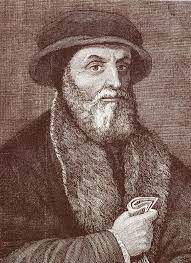 I also enjoyed several of Zoller’s books, especially Tools & Techniques of the Medieval Astrologers (1981), an exploration of the late 13th century astrologer Guido Bonatti’s Liber Astronomiae and Medieval and ancient methods. Bonatti’s work was published in 1491 and included opinions from other astrological sources, notably the 9th century Muslim astrologer Abu Ma’shar.
I also enjoyed several of Zoller’s books, especially Tools & Techniques of the Medieval Astrologers (1981), an exploration of the late 13th century astrologer Guido Bonatti’s Liber Astronomiae and Medieval and ancient methods. Bonatti’s work was published in 1491 and included opinions from other astrological sources, notably the 9th century Muslim astrologer Abu Ma’shar.


